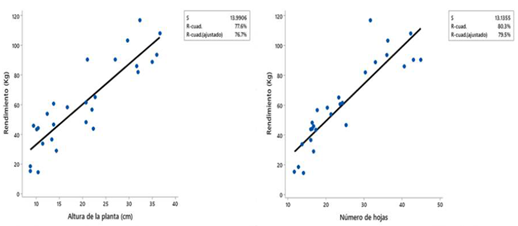Morphoagronomic evaluation of lettuce plants (Latuca sativa L) grown in aquaponics and with chitosan application
effect of chitos an in an aquaponic system
DOI:
https://doi.org/10.28940/terra.v42i0.1811Keywords:
biostimulant, productive parameters, performanceAbstract
Bioestimulants such as chitosan in traditional agriculture have demonstrated their effectiveness in promoting the growth and development of plants, as well as protecting them from diseases, however, in aquaponic production systems their effect is not documented, therefore the objective of this work was to determine the effect of the concentration of chitosan (0, 500 and 1000 mg.L) in three varieties of lettuce (Great Lakes, Regina 500 and Red Rock), in the parameters of lettuce production and the presence of diseases in a system aquaponics circle. Under a 3x3 factorial arrangement, chitosan was applied by spraying at 10 and 45 days after transplantation. An analysis of variance and comparison of means with the Tukey test was used for the effect of the variety, and orthogonal polynomials for the effect of the chitosan concentration, and regression analysis to determine the relationship between the yield and the height and the number and length of leaves. The results show that the variables number of leaves, root length, plant weight, leaf length, plant height and yield increase as the dose of chitosan increases. The Red Rock variety outperformed the Regina 500 and Great Lakes varieties. The presence of insects or diseases was not detected. It is concluded that chitosan favors the growth, development and yield of the lettuce plant in a circular aquaponics systems, especially with doses of 1000 mg.L of chitosan, and that regarding these same variables, the Red Rock variety exceeds Regina 500 and Great Lakes varieties.
Downloads
Publication Facts
Reviewer profiles N/A
Author statements
- Academic society
- Terra Latinoamericana
- Publisher
- Mexican Society of Soil Science, C.A.

















